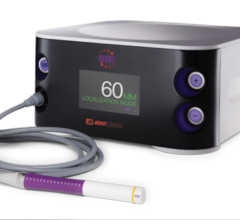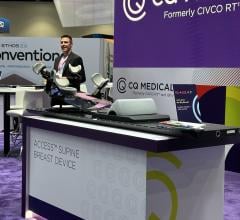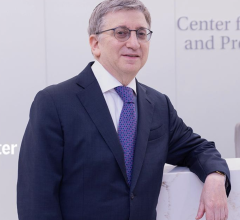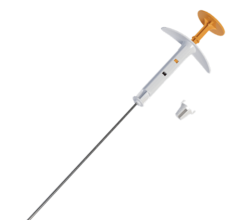
July 19, 2010 – A new way of calculating the dosimetry of cancer treatments will be showcased this week at the annual meeting of the American Association of Physicists in Medicine (AAPM) in Philadelphia. The Acuros BV from Varian Medical Systems enables clinicians to rapidly and accurately calculate patient doses for brachytherapy radiotherapy treatments.
Since its introduction in 2009, clinicians have been researching the dosimetric calculation capabilities of Acuros BV and some leading brachytherapy practitioners and academics will be presenting papers at AAPM on the subject.
“While Monte Carlo software packages have existed for a long time, the tediousness of using them, combined with hours or days of running the algorithms, have made them virtually impractical for use in the clinic, rendering them useful to only a handful of researchers for mostly academic purposes,” said Dorin Todor, M.D., head of brachytherapy at Virginia Commonwealth University in Richmond, Va. “By comparison, Acuros appears to be a major step forward in accuracy and speed.”
Mark Rivard, Ph.D., professor of radiation oncology and chief medical physicist at Tufts Medical Center in Boston, said he finds that Acuros BV will provide more accurate HDR (high dose rate) brachytherapy dose distributions than previously clinically possible.
“I have been evaluating the Acuros BV system since mid-2009 and it is clear the sophisticated dose calculation algorithm is revolutionary for brachytherapy, with speed that is phenomenal compared to Monte Carlo-based calculations,” Rivard said.
Firas Mourtada, M.D., of M.D. Anderson in Houston, will be presenting his findings at AAPM following a retrospective comparison of TG-43 dose calculations and Acuros BV for breast patients.
Dose levels for brachytherapy have generally been calculated as if the sources are surrounded by water, whereas in reality a patient’s anatomy contains many different materials such as bone, lung, tissue and air, as well as additional materials that are often present from inserted applicators. In the past, the only way to account for this was using Monte Carlo calculation techniques, something that was only available as a research tool. Now, for the first time in routine clinical brachytherapy, Acuros BV is able to account for the dose effects from these variations.
Professor Panos Papagiannis and his team at the department of medical physics at the University of Athens in Greece carried out an independent dosimetric accuracy check of the new system.
“We implemented a series of tests following a graded approach and concluded that Acuros BV is the first treatment planning system that not only handles standard TG-43 based calculations but also incorporates the capability to accurately calculate truly individualized patient dose distributions,” Papagiannis said.
As well as Acuros BV, Varian Medical Systems will be exhibiting its full range of brachytherapy hardware and software solutions at AAPM.


 July 11, 2024
July 11, 2024 








